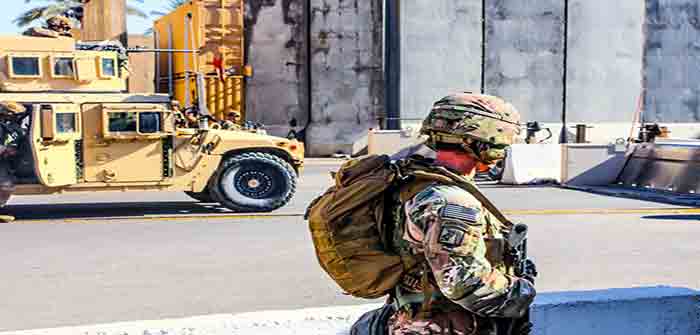
The United States will withdraw almost half of its troops from Iraq this month and make a similar cut to its force in Afghanistan by November, the top U.S. general overseeing operations in the Middle East announced Wednesday.
The decisions were announced by Marine Gen. Kenneth McKenzie, commander for U.S. Central Command, during a visit to Baghdad almost exactly six years after the United States first launched military operations against the Islamic State along the Iraq-Syria border. They also come as President Donald Trump has continued to denounce U.S. involvement in long-running wars in the Middle East and Afghanistan, from which he vowed to disentangle U.S. troops since his 2016 election campaign.
“In recognition of the great progress the Iraqi forces have made and in consultation and coordination with the government of Iraq and our coalition partners, the United States has decided to reduce our troop presence in Iraq from about 5,200 to 3,000 troops during the month of September,” McKenzie said during a U.S. military ceremony in Baghdad. “This reduced footprint allows us to continue advising and assisting our Iraqi partners in rooting out the final remnants of ISIS in Iraq and ensuring its enduring defeat.”
The general was less specific on Afghanistan drawdown plans, which he shared after the Iraq announcement with a small group of reporters on a phone call, a defense official confirmed. McKenzie’s new plan accelerates the ongoing drawdown in Afghanistan, aiming to reduce the 8,600 troops there to some 4,500 “by the late October-November time frame,” the official said.
McKenzie has been clear that he believes the United States must retain some troops in Iraq to aid the ongoing ISIS fight and in Afghanistan to fight terrorist groups there, including the Afghan branch of ISIS.
While U.S.-backed troops in Iraq — primarily, the Iraqi military — and militia forces in Syria known as the Syrian Democratic Forces have ousted ISIS from the vast territory that the terrorist group once controlled across eastern Syria and northern Iraq, the group remains a threat in both countries. Officials believe the group retains tens of thousands of fighters, largely in underground sleeper cells. McKenzie said last month that he believes ISIS leaders aim to retake the territory that the group lost…
Continue Reading